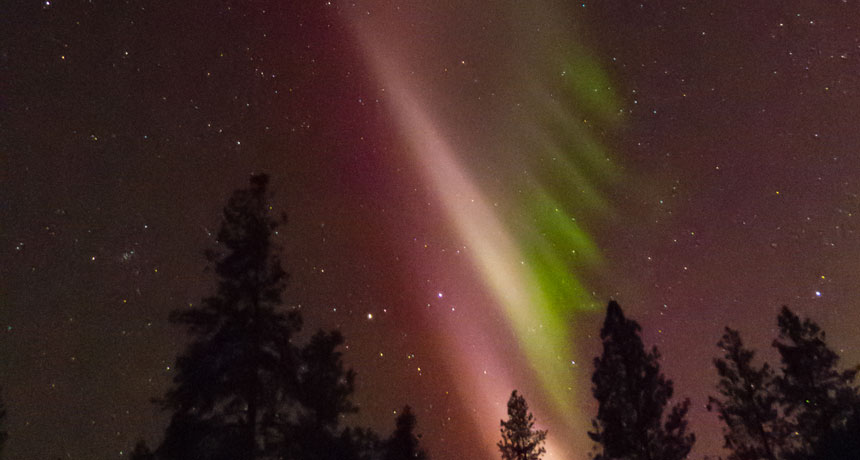Here’s what causes the aurora-like glow known as STEVE
Amateur astronomer images and satellite data reveal what causes the odd atmospheric phenomenon

SECRETS OF STEVE Satellite data are helping uncover the atmospheric processes behind STEVE, a weird sky glow composed of a purple streak and a queue of green light beams.
Rocky Raybell







